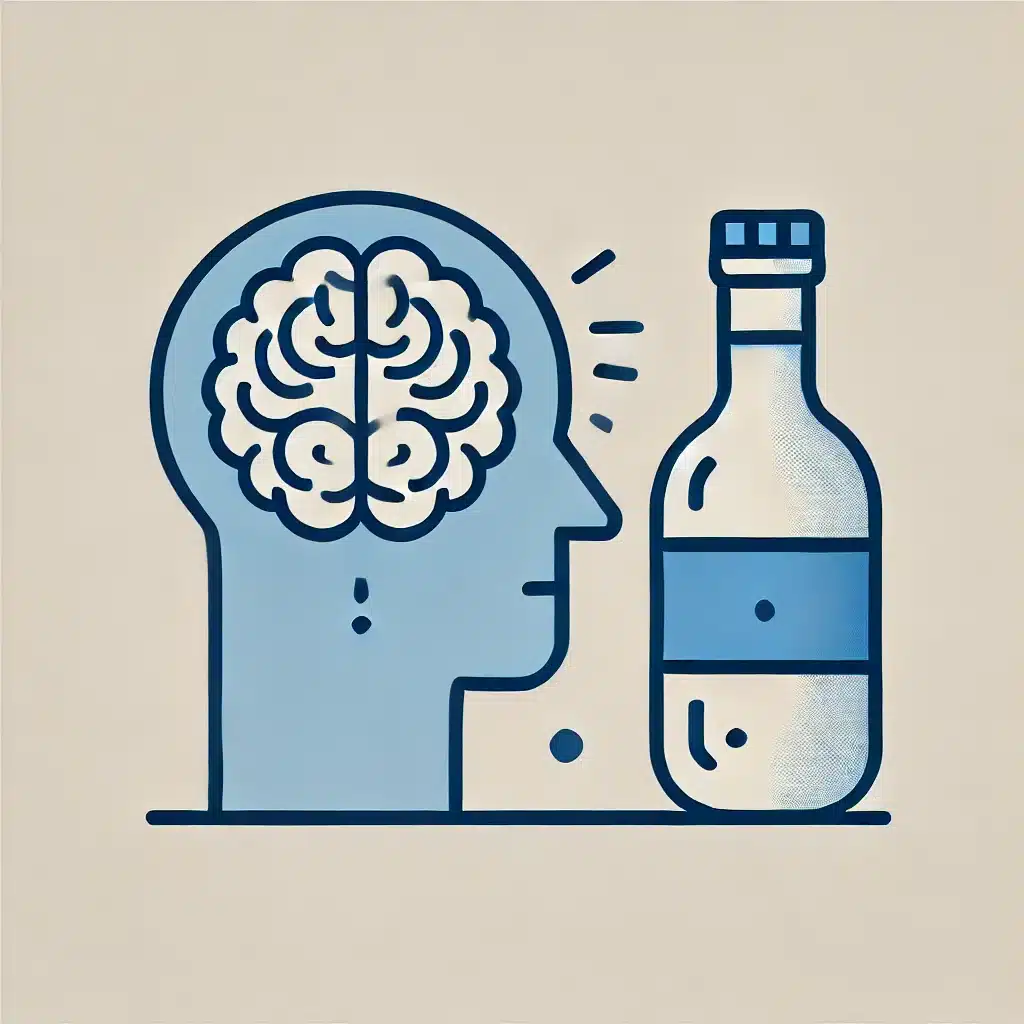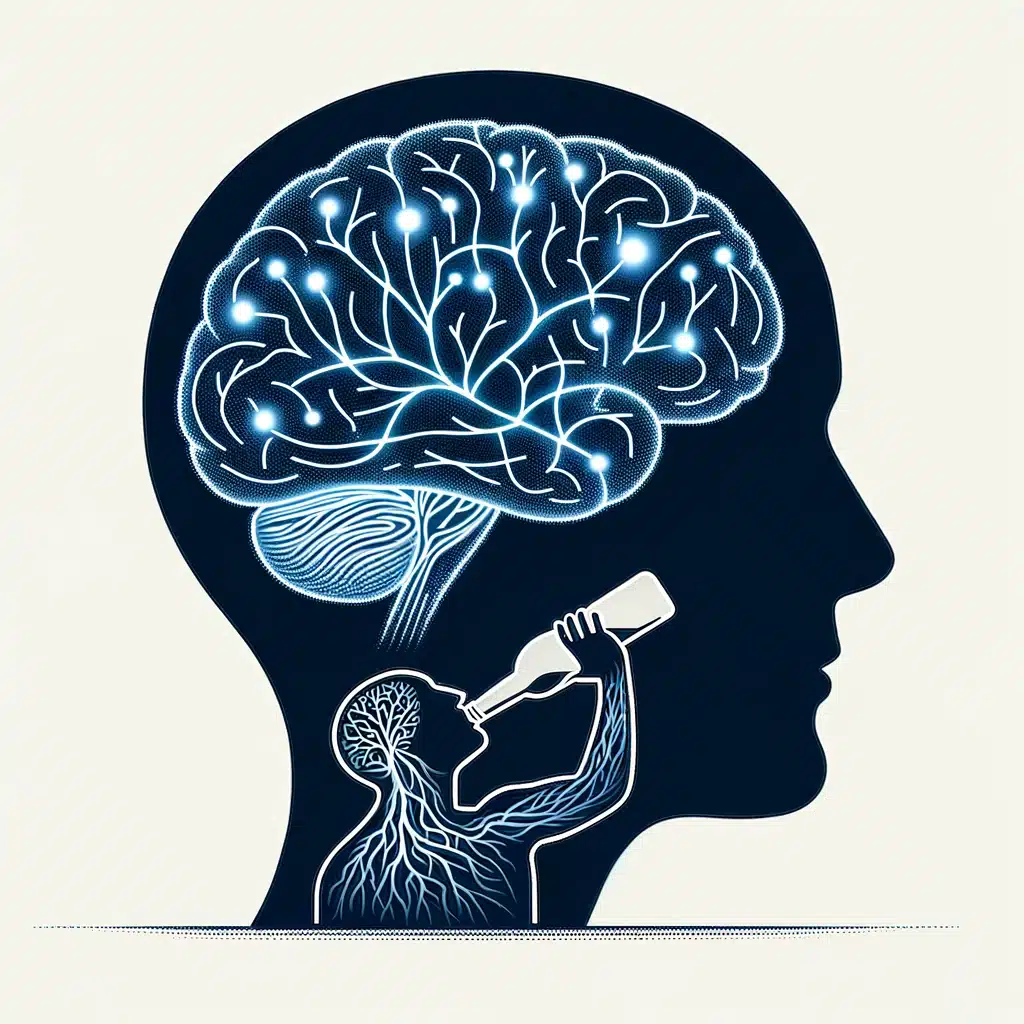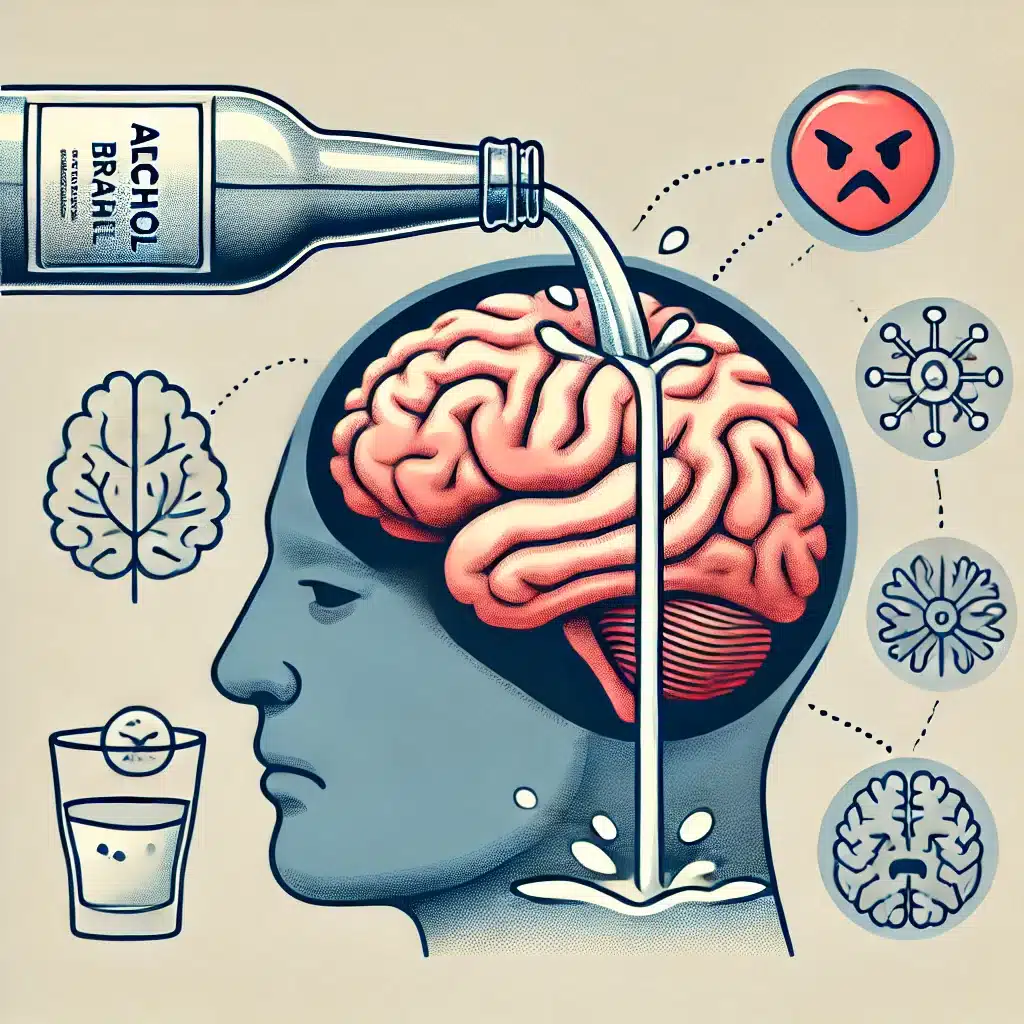Source: Translational Psychiatry (2024)
Major Findings: Alcohol Use Disorder (AUD) Contributing Factors (2024)
1. Alcohol Desire & Sensitivity
The study found that people’s relationship with alcohol can be categorized into two main areas: craving alcohol and how sensitive they are to its effects.
Craving alcohol involves strong desires, obsessions, and compulsions to drink, even if it means going to great lengths or costs to get it.
Sensitivity to alcohol refers to how strongly people feel the effects of alcohol. Some people need to drink more to feel the effects, which can lead to more problematic drinking.
2. Emotional Responses
The study identified three main emotional responses related to alcohol use.
- Internalizing Emotions: This includes negative feelings directed inward, such as anxiety, depression, and stress.
- Externalizing Emotions: This involves outwardly directed behaviors like aggression and low agreeableness, often leading to conflicts and antisocial behavior.
- Psychological Strength: This refers to a person’s ability to cope with stress and adversity, showing resilience and maintaining a positive outlook despite challenges.
3. Cognitive & Self-Control Abilities
The study broke down cognitive functions and self-control into five main factors.
- Inhibitory Control: The ability to stop oneself from acting on impulses.
- Working Memory: The capability to hold and manipulate information in mind for short periods.
- Interoception: Awareness of internal bodily signals, such as hunger or heart rate, and how these affect behavior.
- Rumination: The tendency to dwell on negative thoughts repeatedly.
- Impulsivity: Acting on the spur of the moment without thinking about the consequences.
4. Strong Connections Between Factors
The study found that certain factors are strongly connected.
Craving alcohol, internalizing negative emotions, and impulsivity are closely linked. This means people who crave alcohol often experience high levels of anxiety or depression and act impulsively.
5. Effective Classification of AUD
The study identified that the factors of alcohol craving, insensitivity to alcohol’s effects, and impulsivity are the best indicators for identifying people with problematic drinking behaviors and AUD.
These findings help create a more detailed understanding of AUD, allowing for better-targeted treatments and interventions based on specific characteristics of individuals’ relationships with alcohol.
Alcohol Use Disorder (AUD) Overview

Causes
- Genetic Factors: Family history of AUD increases risk.
- Environmental Influences: Peer pressure, stress, and exposure to alcohol in early life.
- Psychological Factors: Mental health conditions such as depression and anxiety.
Symptoms
- Cravings: Strong desire or urge to drink alcohol.
- Loss of Control: Inability to limit drinking on any given occasion.
- Tolerance: Needing more alcohol to achieve the same effects.
- Withdrawal: Experiencing physical symptoms such as shaking, sweating, and nausea when not drinking.
- Neglect of Responsibilities: Failing to fulfill obligations at work, school, or home due to drinking.
Treatment & Management
- Behavioral Therapies: Cognitive-behavioral therapy (CBT), motivational interviewing, and contingency management.
- Medications: Naltrexone, acamprosate, and disulfiram to reduce cravings and withdrawal symptoms.
- Support Groups: Alcoholics Anonymous (AA) and other peer support programs.
- Lifestyle Changes: Avoiding triggers, adopting healthy habits, and building a strong support network.
- Professional Help: Consulting healthcare providers for a comprehensive treatment plan.
Study Details: Neuroclinical Evaluation of Alcohol Addiction (2024)

The study aimed to validate and expand the Addictions Neuroclinical Assessment (ANA) framework by identifying specific factors within three neurofunctional domains (Incentive Salience, Negative Emotionality, and Executive Function) related to Alcohol Use Disorder (AUD).
The goal was to better understand the complexities and variations within AUD to improve diagnosis and treatment.
Sample
- The study included 300 adults across the drinking spectrum, from light to heavy drinkers.
- Participants were a mix of individuals admitted to a 28-day inpatient treatment program for AUD at the National Institutes of Health (NIH) Clinical Center and non-treatment-seeking individuals from the community.
- The sample was diverse in terms of age, gender, and ethnicity.
Methods
- Assessments: Participants completed the ANA battery, which consisted of a variety of behavioral tasks and self-report questionnaires designed to assess the three neurofunctional domains.
- Factor Analyses: Factor analyses were used to identify underlying factors within each domain. This statistical method helps to find patterns and groupings among the various measures.
- Structural Equation Models: Structural equation modeling (SEM) was employed to examine the relationships between the identified factors across the domains.
- Classification Analysis: Receiver operating characteristics (ROC) analyses were conducted to determine which factors were most effective at classifying individuals with problematic drinking and AUD.
Limitations
- Cross-Sectional Design: The study’s cross-sectional nature means it captured data at a single point in time, making it difficult to determine whether the identified factors are causes or consequences of AUD.
- Behavioral Task Reliability: There were some discrepancies between self-report measures and behavioral tasks, which may be due to the inherent differences in how these assessments capture behavior and perception.
- Sample Diversity: While the sample was diverse, the study may still have limitations in generalizing findings to all populations or different cultural contexts.
- Clinical Utility: Although the study validated the ANA framework, further work is needed to develop shorter, more practical assessment batteries for routine clinical use.
Potential Real-World Applications of the Findings
Tailored Interventions: The detailed understanding of different factors within the neurofunctional domains allows healthcare providers to create more personalized treatment plans. For instance, if a patient has high impulsivity and low inhibitory control, specific therapies targeting these issues can be prioritized.
Targeted Therapies: Knowing whether a person’s AUD is driven more by craving (Incentive Salience) or by internalizing emotions (Negative Emotionality) can guide the selection of therapeutic approaches, such as cognitive-behavioral therapy for impulsivity or mindfulness techniques for internalizing issues.
Enhanced Screening: The factors identified in the study can be used to develop more precise screening tools that better capture the complexity of AUD. This can help in earlier detection and intervention, improving outcomes.
Risk Assessment: Clinicians can use these factors to assess the risk of developing AUD in individuals, allowing for preventive measures to be taken before the disorder fully manifests.
New Drug Targets: Understanding the neurobiological underpinnings of the identified factors can lead to the development of new medications that target specific aspects of AUD, such as drugs that reduce alcohol craving or enhance inhibitory control.
Behavioral and Cognitive Research: The findings provide a rich source of data for further research into the cognitive and behavioral aspects of AUD, potentially leading to innovative therapeutic techniques and interventions.
Patient Education: Educating patients about the different factors that contribute to their AUD can empower them to take an active role in their recovery, fostering a better understanding and adherence to their treatment plans.
Digital Health Tools: The insights from the study can be used to develop digital health tools and apps that help individuals monitor and manage their AUD-related behaviors. For example, apps that track craving levels and provide real-time coping strategies can be highly beneficial.
Wearable Devices: Wearable technology can be designed to monitor physiological signals related to the identified factors, such as heart rate variability for stress (Negative Emotionality) and provide feedback or interventions when needed.







